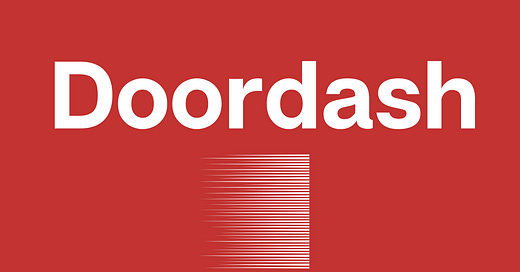DoorDash: The Value of Speed
Doordash in 1 minute
Pandemic-favorite DoorDash is slated to IPO at a $32 billion valuation. Best-known for its food delivery marketplace, DoorDash has scaled quickly since its official launch in 2013, only accelerating during the coronavirus outbreak.
That velocity has taken DoorDash to the top of the food delivery space with 50% US market share. Revenu…



